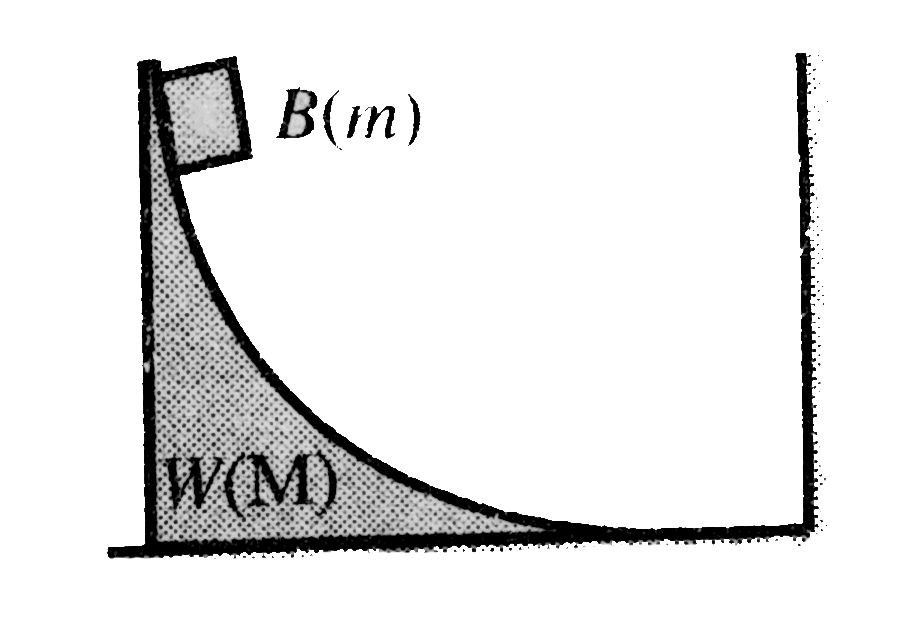A 25 kg bear slides from rest 12 m down a pine tree moving with a speed of 5.6 m/s just before hitting the ground. What is the average frictional force that acts on the sliding bear? a 210 Nb 180 Nc 110 Nd 170 N
The correct option is a 210 N.Explanation:The change in the mechanical and thermal energy must sum to zero. Since the change in thermal energy is ΔEth = fL where f is the magnitude of the average frictional force
Related Solutions
A child weighing 25 kg slides down a rope hanging from a branch of a tall tree. If the force of friction acting against him is 200 N, the acceleration of child is
View SolutionA child weighing 25 kg slides down a rope hanging from a branch of a tall tree. If the force of friction acting against him is 200 N, the acceleration of child is (g=10 m//s^(2))
View SolutionA box of mass 25 kg starts from rest and slides down an inclined plane 8 meter long and 5 meter high. It is found to move at the bottom at 7 m/s. What is the force of friction
View SolutionA box of mass starts from rest and slide down as inclined plane metre long and meter length . It is found to move at the bottom at . What is the force of friction?
View SolutionIn a children's park, a slide with a total length of 10 m and height 8 m is installed. There is a vertical ladder to climb up. A 200 Newton weight boy climbs with the help of a ladder and slips down to the ground. The average friction applied by the slide is (3)/(10) Is part. Slide is the act of sliding the child down
View SolutionA child weighing 25 kg slides down a rope hanging from the branch of a tall tree. If the force of friction acting against him is 2 N , what is the acceleration of the child
View SolutionBall bearings are used to convert sliding friction into :
View SolutionA boy weighing 250 N slides down upto the ground from the top of a slide. The friction offered by the slide is three tenth of his weight. The length and height of the slide is 10 m and 8 m, respectively. The work done by the slide on the boy as he comes down to the ground is
View SolutionA block of mass M is sliding down the plane. Coefficient of static friction is mu_(s) and kinetic friction is mu_(k) . Then friction force acting on the block is :
View SolutionA block of mass 3 kg slides down an inclined plane of length 6 m and height 4 m. if the force of friction on the block is a constant 16 N as it slides from rest at the top of the incline, what is its speed at the bottom?
View SolutionA body weighing 20 kg just slides down a rough plane that rises 5 in 12. What is the coefficient of friction?
View SolutionA fireman of mass 60 kg slides down a pole. He is pressing the pole with a force of 600N. The coefficient of friction between the hands and the pole is 0.5, with what acceleration will the fireman slide down (g=10(m)/(s^2) )
View SolutionA fireman of mass 60 kg slides down a pole. He is pressing the pole with a force of 600N. The coefficient of friction between the hands and the pole is 0.5, with what acceleration will the fireman slide down )
View SolutionA body weighing 20 kg just slides down a rough inclined plane that rises 5 m in every 13 m. What is the coefficient of friction?
View SolutionBall-bearing converts sliding friction into rolling friction (yes/No)
View SolutionWhat is the direction of frictional force actiog on a body moving or sliding towards east ?
View SolutionA body weighing 20 kg just slides down a rough inclined plane that rises 5 m in every 12 m.What is the coefficeint of friction?
View SolutionIn the figure, the block of mass starts from rest at the top of a wedge of mass . All surfaces are without friction. can slide on the ground. slides down onto the ground, moves along it with a speed v, has an elastic collision with the wall, and climbs back on to .
 View Solution
View SolutionIn the figure, the block B of mass m starts from rest at the top of a wedge W of mass M . All surfaces are without friction. W can slide on the ground. B slides down onto the ground, moves along it with a speed v, has an elastic collision with the wall, and climbs back on to W .
View SolutionIn the figure, the block B of mass m starts from rest at the top of a wedge W of mass M. All surfaces are without friction. W can slide on the ground. B slides down onto the ground, moves along it with a speed v, has an elastic collision with the wall, and climbs back two W.
View Solution
